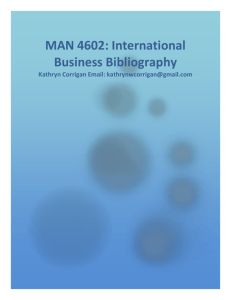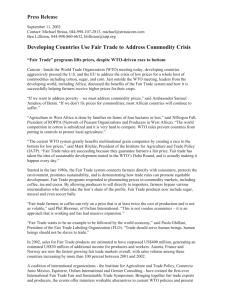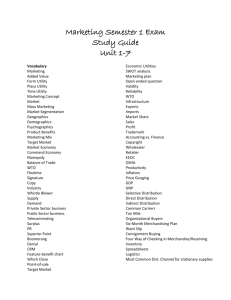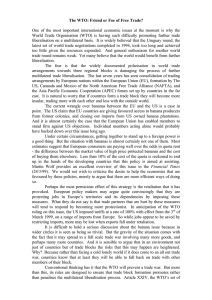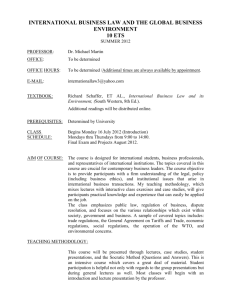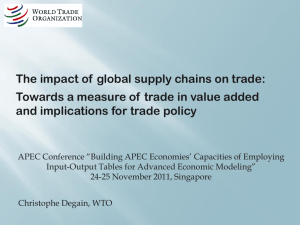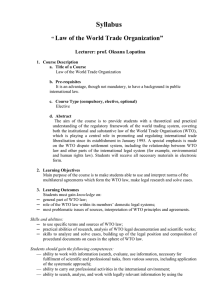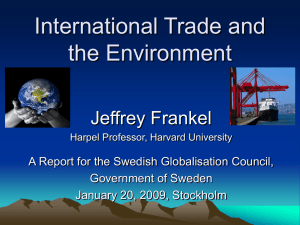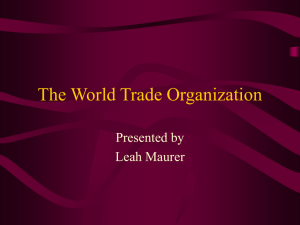Chapter 7 International Factor Movements
advertisement
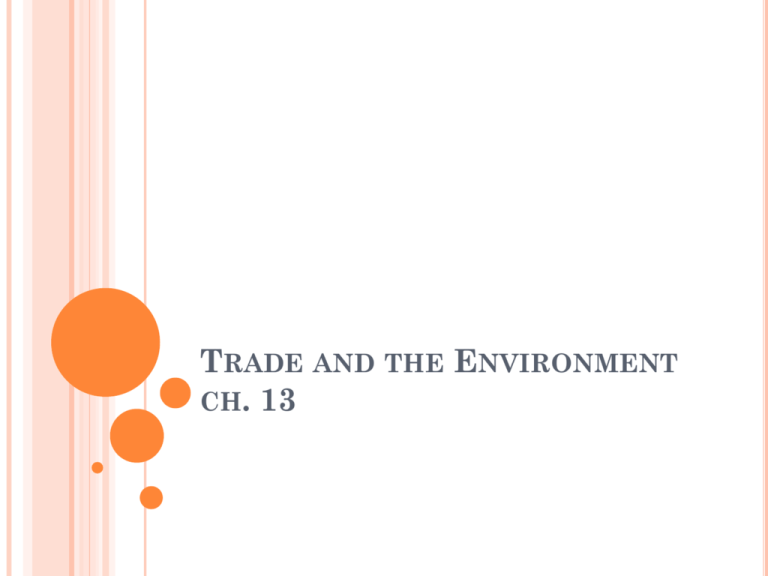
TRADE AND THE ENVIRONMENT CH. 13 IS FREE TRADE POLICY ANTIENVIRONMENT? 4 arguments: Free trade policies can make environmental problems worse. Protectionist trade policy can make environmental problems worse Free trade policies can make environmental problems better. Free trade shifts production to countries with lax environmental policies/standards. 1. 2. 3. 4. Race to the bottom IS FREE TRADE ANTI-ENVIRONMENT? Test: What should happen to the environment with a decrease in protectionist trade policy after the Uruguay Round of the WTO (1986-1995)? 1. 2. 3. Composition effect: We know freer trade will change the composition of what is produced and consumed in each country. Size Effect: Freer trade may also mean that the size of the economy for a given country will be larger (this is a gain from trade). But as economies grow, increased production/consumption may mean more pollution (this is a cost from trade). Income Effect: As economies grow, incomes grow. We also know that when incomes rise in countries, wealthier people demand a better environment. Which effect is larger (size or income)? IS FREE TRADE ANTI-ENVIRONMENT? Consider the 'environmental Kuznets curve'. 1. 2. 3. Rising Environmental problems: Environmental harm rises with income per person Declining environmental problems: Environmental harm declines with rising income per person. This is where we see a inverted-u shape. Where is the turning point? Research suggests it is an income level higher than most in LDCs, but lower than most DCs DATA ON TYPES OF ENVIRONMENTAL PROBLEMS THAT WE EXPECT TEND TO HAVE A U-SHAPE WTO ARTICLE XX Subject to the requirement that such measures are not applied in a manner which would constitute a means of arbitrary or unjustifiable discrimination between countries where the same conditions prevail, or a disguised restriction on international trade, nothing in this Agreement shall be construed to prevent the adoption or enforcement by any contracting party of measures: (b) necessary to protect human, animal or plant life or health; (g) relating to the conservation of exhaustible natural resources if such measures are made effective in conjunction with restrictions on domestic production or consumption; IS THE WTO ANTI-ENVIRONMENT? 3 important types of policies that may qualify for exceptions to free trade 1. Consumption of products can cause environmental damage The WTO rules make it clear that a country can impose product standards or other limits on consumption to protect their country's health, safety or the environment. These policies may limit imports. But: many WTO disputes over this cause environmental damage. The WTO also examines whether a policy has a scientific basis for the standard, for health and safety in particular. Point: you can’t treat imports differently than home produced goods. IS THE WTO ANTI-ENVIRONMENT? 3 important types of policies that may qualify for exceptions to free trade Production in foreign countries can cause environmental damage. 2. The WTO permits an environmental exception for national rules that limit imports of product using a process that harms the environment with strict standards: rules must demonstrate they assist in a legitimate environmental goal. They must limit trade as little as possible rules must be equally applied to foreign and domestic production the country imposing the rule must be engaged in multilateral negotiations to establish an agreement to address the environmental problem. IS THE WTO ANTI-ENVIRONMENT? 3 important types of policies that may qualify for exceptions to free trade Some environmental problems are global in scope and may require global solutions to be negotiated 3. Can non-WTO multilateral environmental agreements impose trade restrictions? The following two use trade bans. The Convention on International Trade in Endangered Species Montreal Protocol

